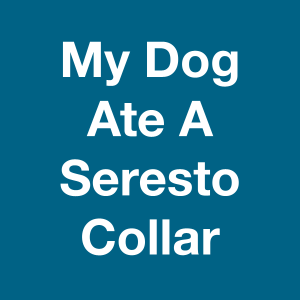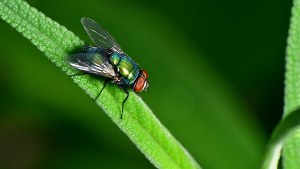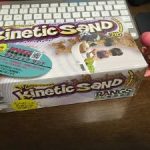
Lately, there has been a lot of discussion amongst pet owners regarding Seresto collars and whether they are safe for pets.
Seresto collar is a brand of a flea and tick collar, meaning it’s used to repel fleas and ticks from dogs and cats.
Wrap it around your dog’s neck and it works by gradually releasing active ingredients over the dog’s body. These active agents would then kill any fleas that come nearby.
Because dogs chew on and swallow anything, you might be worried about the ingredients contained in Seresto collars, and whether it’s safe for your beloved pup. On top of that, there are several articles around the internet talking about Seresto collars being harmful. So, are they really dangerous?
Are the chemicals in Seresto collars toxic?
Seresto collars use two active ingredients, imidacloprid (10%) and flumethrin (4.5%). Imidacloprid is an insecticide that attacks fleas’ central nervous system. Meanwhile, flumehtrin repels ticks.
These chemicals have been approved by EPA for topical use, so your dog should be fine wearing Seresto collars. While several reports have found dogs obtaining skin redness and hair loss in the area near the collar, it is unlikely to happen. Certain conditions that increase the likelihood of skin reactions include the dog being too young or having an open wound.
When eaten, imidacloprid can cause a range of health problems like over-salivation, diarrhea, vomiting, congestion, tremors, and ear twitch. On the other hand, signs of flumethrin poisoning includes: hypersalivation, diarrhea, vomiting, hyperactivity, tremors, and lethargy.
Imidacloprid and flumethrin are only contained in Seresto collars in small doses. Therefore, intoxication is more likely to only occur on puppies under seven weeks old, old dogs, dogs with poor health, and toy breeds. Generally healthy dogs should have a strong defense against the pesticide if they only ingested a small chunk. In fact, certain doses of imidacloprid can even be used to treat flea infestations orally.
How a vet will treat the chemical poisoning
If the symptoms are serious, your dog would need to be hospitalized and given IV and nutritional therapy. The vet might also administer activated charcoal, magnesium sulphate, or sodium sulphate to treat intoxication. Other treatments are given based on the symptoms. If the vet feels it’s needed, your dog will also get x-rayed to locate the collar chunk and see if they would have to surgically remove it.
What materials are Seresto collars made from?
As well as the danger from the chemicals, eating a collar comes with its own dangers. In fact, a lot of flea collar ingestion problems come from intestinal blockage and not due to poisoning. Seresto collars are made of plastic, specifically fine polymer matrix that controls the release of the pesticides.
The first potential effect that eating a chunk of the plastic collar is of course windpipe blockage, also known as choking. If your dog is coughing, gagging, and gasping for air, open their mouth and gently pull down their tongue. If you can see the plastic chunk, gently pull it out. If that’s not possible, try the Heimlich maneuver by carrying them and pressing right beneath the rib cage. Finally, if you’re met with resistance when trying to pull out the dislodged collar or if all methods have failed, stop immediately and go to the vet.
Seresto collar is made up of small structures that are very prone to getting swallowed by your dog. If your dog only swallowed these small things, they probably wouldn’t cause choking. But the problem now becomes potential gastrointestinal blockage (bowel obstruction).
Symptoms of a chunk of a collar being stuck in a dog’s intestine
- Diarrhea
- Lethargy
- Lump or tenderness in their belly
- Vomiting (trouble keeping food down)
- Dehydration
How to treat gastrointestinal blockage at home
First of all, if gastrointestinal blockage occurs, you must take your dog to the vet. Do not induce vomiting without consulting your vet. Blockages are extremely serious and can even be fatal. The vet will determine the severity of the situation and order treatments if needed. After getting treated, your vet will tell you what you need to do next.
Home remedies after blockage include nursing their digestive system back to normal. Just like in humans, what you need to do is make your pup eat and drink a lot of liquids and fibres. Give them simple foods only that are easy to digest, vets usually recommend pumpkin puree. Monitor them and make sure they’re not being overly active. Another thing you can do is give warm compress to their stomach to help soothe the pain.
Why do dogs eat non-food items?
To prevent your dog from eating their collar, it would be better if you try to understand why they do it in the first place. After all, dogs are smart creatures, they know that their collars aren’t food, so why do they still eat it?
This compulsive tendency to eat non-food items is called “pica”. Pica can be caused by 2 things: behavorial and medical. If it’s behavorial, it’s mainly because of boredom, stress, or anxiety. On the other hand, some common medical reasons of pica include nutritional imbalance, digestive problems, diabetes, and thyroid disease. Puppies have been shown to have higher pica tendencies.
How to stop a dog from eating a Seresto collar
If they tend to eat non-food items when bored, keep them occupied. Give them stimulations, exercises, and things they can fidget with. If the pica persists, try training them by making them wear basket muzzle whenever they chew on their collar (remember, never leave your dog unattended if they’re wearing a muzzle). Pica caused by medical conditions are more complex and it might be best to consult your vet, they will help give solution that’s suited for the medical condition.
You also need to further eliminate chances of your dog eating their Seresto collar. When putting it on, make sure the collar is snug. Cut off any excess length so your dog can’t bite it. When not in use, make sure to store it away where your dog can’t access it.
Natural alternatives to treating fleas and ticks
Seresto collars are proven to be really effective in reducing fleas and ticks, especially in flea and tick season. They’re also relatively cheap and last months on end. However, there are a lot of opinions about them, with a lot of people believing they’re a toxic hazard.
If your dog is more susceptible to pesticides or you wish to prevent all possible trouble that comes with flea collars, you can look for alternatives. There are a lot of options like spot-on liquids and oral flea treatments. But if you want, you can also try a more natural approach, including:
- Essential oils
Instead of using pesticide chemicals, try spraying your dog with some essential oils. These might not kill fleas, but they’re effective in repelling them, and they’re most definitely safer. Some of the best oils you can use are peppermint, lavender, eucalyptus, cedar oils, and lemongrass. Be careful and make sure that the essential oil you’re using is diluted in a safe concentration for dogs.
- Lemon juice
Other than essential oils, you can also use the stingy scent of lemon juice to repel fleas and ticks. Simply make a lemon juice spray and spray it onto your dog’s fur. Another method is to spray the lemon juice onto your dog’s brush before brushing their fur. Other citrus fruits like oranges are also effective to repel pests.
- Get ladybugs
These red and black little creatures are actually flea predators. Go to the nearest garden shops and purchase a few ladybugs. Release them in your backyard and voila! They will remove the fleas for you.
- Maintaining hygiene
As you probably already know, fleas and ticks are more likely to live on dirty pets and dirty environment. Keep your house clean to prevent infestations. Change bed covers, pillowcases, and your dog’s beddings regularly. Don’t forget to trim the lawn because fleas love overgrown and unkempt lawns.
You should also clean and groom your dog frequently. There are a lot of medicated dog shampoos aimed to treat flea and tick infestation. When it’s not bath time, simply spraying your dog or dipping them in water will help removing fleas and ticks from their fur.
Closing Thoughts
Just like other types of flea and tick collars, Seresto collars are generally safe and very useful for repelling fleas and ticks from your dog. But if your dog ate the Seresto collar, be aware of the symptoms and consult a vet. Always remember that sometimes the symptoms can look mild when the problem is actually serious. For example, you might not even realize that your dog has been ingesting chunks of their collar for a while, so always pay attention to their behavior.
For dogs who is under seven weeks of age, has a medical condition, or a toy designer, it’s best not to make them wear Seresto collars as they’re more susceptible to pesticide poisoning. Try using natural remedies to get rid of fleas and ticks instead.





